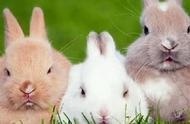Premium Reptile Food
Types of reptile foods
The diet of reptiles varies depending on the species. Some are carnivores, some are herbivores, and others are omnivores. Reptile food can be categorized into different types based on their dietary needs.
Carnivore reptile food
This type of reptile food is for meat-eating reptiles, such as snakes and lizards. The food includes whole prey like mice, rats, and insects. It also has commercial meat-based diets with vitamins and minerals.
Herbivore reptile food
This food is for plant-eating reptiles like tortoises and some lizards. It includes commercial pelleted diets and fresh vegetables and fruits.
Omnivore reptile food
This food is for reptiles that eat both plants and animals. It includes various food options like commercial diets and fresh fruits and vegetables.
Insectivore reptile food
This food is for insect-eating reptiles such as certain lizards and snakes. It includes commercially available diets and live insects like crickets, roaches, and worms.
Commercial reptile food
They are specially formulated diets that cater to the various dietary needs of different reptile species. Commercial reptile foods come in various forms, including pellets, canned foods, and freeze-dried options. They are convenient and provide balanced nutrition for reptiles.
Live food
Many reptiles, especially insectivores and carnivores, thrive on live prey. This food includes insects, worms, and small rodents. Feeding live food can provide natural hunting behavior and stimulation for reptiles.
Fruits and vegetables
While some reptiles eat only meat or pellets, many benefit from including fresh produce in their diet. This food is essential for herbivores and can also provide variety and nutrition for omnivores.
Vitamin and mineral supplements
These are essential for reptiles, especially those fed a captive diet. They help prevent nutritional deficiencies and promote overall health. Many supplements have calcium, phosphorus, and vitamins A, D3, and E.
Design of reptile foods
Live Food
Some reptiles, such as snakes and lizards, are given life food. Suppliers of reptile food usually breed insects like crickets, mealworms, and cockroaches in clean space. The breeders feed the insects with nutritious food, such as grains and vegetables. They also keep the insects in the right environment, with the right temperature and humidity. This helps the insects grow healthy and fast. For bigger reptiles, suppliers breed rats, mice, and rabbits. These small animals are also kept in a clean space and fed well. They are all alive when given as food. This is often better for the reptile than frozen or dead food, as some reptiles prefer to catch and eat their prey alive.
Canned Insects
Canned insects are another popular design option for reptile food. They provide a convenient and long-lasting alternative to live insects. The insects are cooked and sealed in cans to make canned insect food. This process kills off any germs and keeps the food safe for reptiles to eat over a long time. Canned crickets, mealworms, and grasshoppers are common options. This design suits reptiles that might be scared to eat live insects or those still getting used to eating them. It also removes the need to provide live food regularly, which can take time and effort.
Frozen Food
Frozen food is also a common design for reptile food. It is especially suitable for snakes and larger lizards that eat whole prey. Suppliers of reptile food catch the snakes' and lizards' natural prey, such as mice, rats, fish, and some small birds. They then clean and freeze the food in different portions. Frozen prey is easy to store and safe for reptiles when thawed before feeding. It also helps keep the reptiles' diet varied, mimicking what they would eat in the wild. Frozen food eliminates the need to handle live animals, making feeding safer and more comfortable for both the reptile and the owner.
Scenarios of reptile food
Feeding Pet Reptiles
Pet owners feed their reptiles with many commercially manufactured foods. These foods are suitable for pets like snakes, lizards, turtles, and tortoises. The diets include whole prey items like mice and insects, pellets, and fresh fruits and vegetables. Pet owners ensure to provide a balanced diet that meets the specific nutritional needs of their reptiles. They also provide the right size of reptile food to prevent choking and other feeding problems.
Zoo and Conservation Programs
Reptile foods are widely used in zoos and conservation programs. These programs care for various reptile species, educate the public, and promote conservation efforts. The zoos provide diets that mimic the reptiles' natural habitats. They also prepare whole prey items and some supplements to ensure the reptiles are healthy and active. The foods are also used to train the reptiles and encourage natural behaviors.
Wildlife Rehabilitation Centers
Wildlife rehabilitation centers use reptile foods to care for injured or orphaned reptiles. These centers provide a suitable diet to help the reptiles recover and regain their health. The foods often include whole prey items and live insects. The centers also provide specialized diets for the reptiles that need extra care.
Research and Education
Reptile foods are critical in research and education settings. Researchers use these foods to study the reptiles' behavior, physiology, and ecology. The educators also use the diets to teach students about reptile biology and conservation. The foods help provide valuable insights into the reptiles' lives and help raise awareness about the need to protect their habitats.
Aquariums and Marine Reserves
In aquariums and marine reserves, reptile foods are used to feed various aquatic reptiles. These diets include commercially prepared pellets and whole prey items like fish and insects. The aquariums provide balanced nutrition to the reptiles in their exhibits and contribute to educating visitors about aquatic wildlife.
How to choose reptile food
To ensure the well-being of reptiles, it is vital to choose the right food for them. Reptiles vary in their natural diets, which can include insects, fruits, and vegetables, as well as fish and small mammals. It is important to learn about the specific dietary requirements of the reptile species being kept. Some reptiles can be fed a wide variety of foods, while others need a certain diet to stay healthy.
When selecting reptile food, consider its nutritional value. Look for foods that have been fortified with vitamins and minerals, as this can help fill any gaps in a reptile's diet. Also, take into account the size and texture of the food. Smaller pieces or softer textures may be better for younger or sick reptiles that find it hard to eat larger items. Additionally, think about whether the reptile prefers live, frozen, or dried food.
Variety is key when it comes to feeding reptiles. Offering different types of food can provide all the necessary nutrients and keep them interested in eating. However, be careful not to give too much at once, as some reptile foods spoil quickly or can lead to overfeeding if offered in excess. Always follow the guidelines on packaging regarding portion sizes.
Choose reptile food that is suitable for the specific species. It's important to match the reptile with the correct food type for its species and stage of growth. Some reptiles, like snakes, need whole prey items, while others do well with commercially prepared diets. Avoid feeding wild-caught insects or other animals because they may have been exposed to pesticides or diseases that could harm the reptile.
Consider the convenience of the reptile food. Commercially prepared diets and specialized reptile pellets are easy to store and serve. They also reduce the need for frequent shopping. However, many reptiles enjoy the naturalness of live or fresh foods. Balance convenience against what will best suit the reptile's health and happiness.
Q&A
Q1: What do reptiles eat?
A1: Reptiles are carnivores, herbivores, and omnivores. They eat insects, mice, fruits, vegetables, and commercial foods.
Q2: How often should reptiles be fed?
A2: Feeding frequency varies by species, age, and size. Younger reptiles often require daily feeding, while adults can be fed every few days or weekly.
Q3: How can reptile food be stored?
A3: Live food should be kept in appropriate containers and given proper diets. Packaged foods should be stored in a cool, dry place. Frozen foods should remain in the freezer.
Q4: What supplements do reptiles need?
A4: Many reptiles need calcium and vitamin supplements, especially those who eat whole prey or have a diet rich in vegetables.
Q5: What should be avoided in reptile food?
A5: Avoid toxic substances, large prey that could choke the reptile, and unwashed produce, which may have pesticides.
相关知识
Premium Reptile Food
Best Quality Petline Natural Premium Adult Gourmet %36 Protein Meat,Fish & Chicken Cat Food 12 Kg Wholesale Pet Food
Wholesale Hot Sell High Protein Nourishing Dried Superworms For Animal Food Feed Pet Food
Nomoy Pet Wholesale Comfortable Standing Type Flexible Holder Lamp Stand For Reptile Nj
Lavender Leopard Gecko: A Colorful Reptile
Natural Pet Products Pet Food And Cat Cookies Cat Biscuits Pet Treats Snacks - Buy Crunchy Snack For Cat Dog Biscuits Dog Cat Treats Wholesale
dry Cat Food Cat Snack Kitten Cat Treats
yaho Dog Cat Treats Product on Alibaba.com
Edible Grasshopper Wholesale Price Eco Fresh Grasshopper Reptile Food Turtle Food
Pet Hotel Premium下载
Wholesale Dry Cuttlebone Cuttlefish Bone For Pets Reptile Hermit Crab 100% Natural Cuttlefish Bon/vietdelta
Bespoke Clear Magnetic Acrylic Reptile Cage Tall Enclosure Lucite Reptile Breeding Box Terrarium
网址: Premium Reptile Food https://www.mcbbbk.com/newsview1172055.html
| 上一篇: 爱宠人士养了只蜥蜴,平时只给它吃 |
下一篇: 销量暴涨!俄罗斯宠物经济爆发,小 |
推荐分享

- 1养玉米蛇的危害 28694
- 2狗交配为什么会锁住?从狗狗生 7180
- 3我的狗老公李淑敏33——如何 6236
- 4豆柴犬为什么不建议养?可爱的 4637
- 5南京宠物粮食薄荷饼宠物食品包 4563
- 6中国境内禁养的十大鸟种,你知 4429
- 7湖南隆飞尔动物药业有限公司宠 4259
- 8自制狗狗辅食:棉花面纱犬的美 4257
- 9家养水獭多少钱一只正常 4212
- 10广州哪里卖宠物猫狗的选择性多 4122






